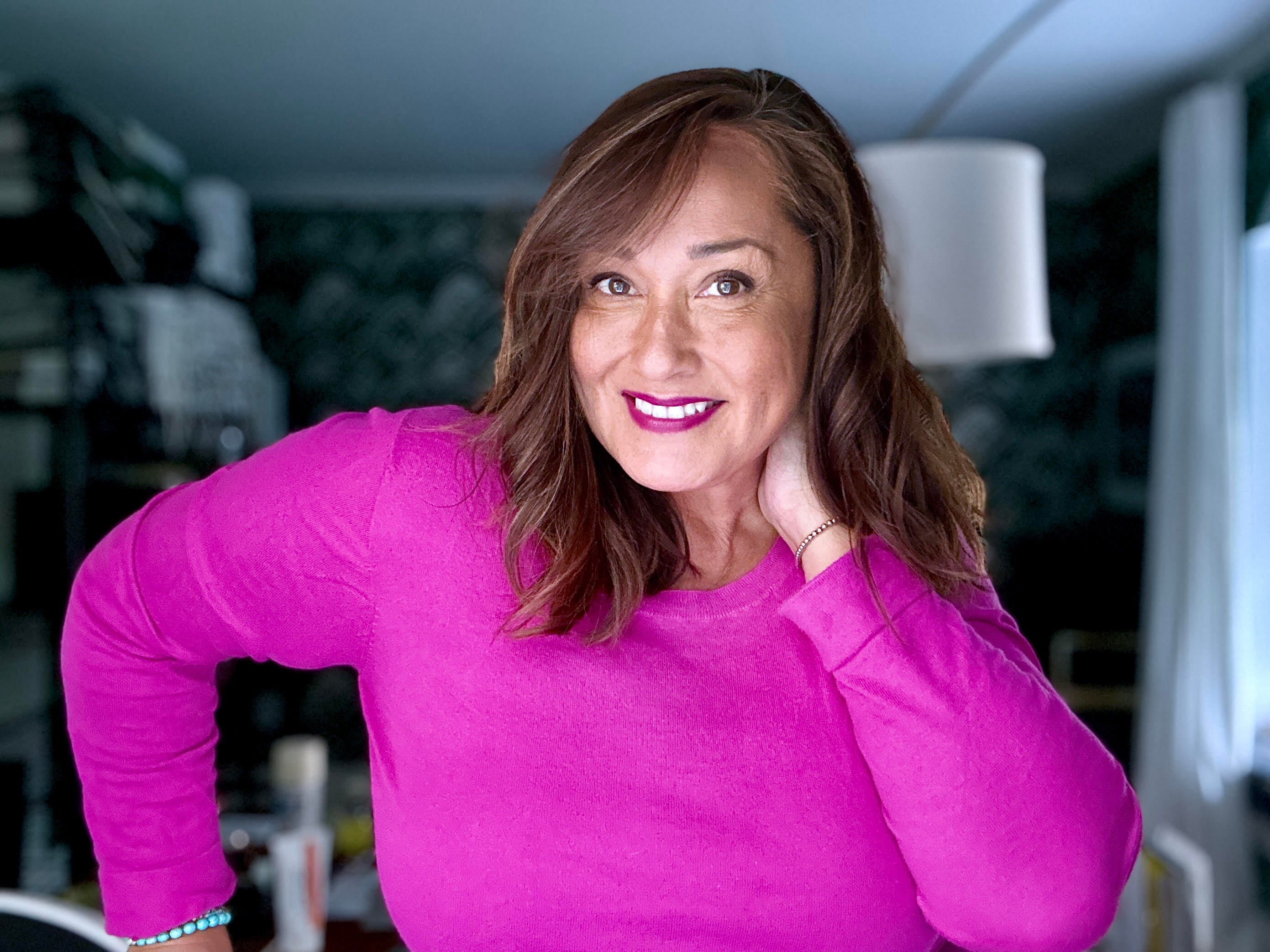The 50 States Project is a series of candid conversations with interior designers across the country about how they’ve built their businesses. This week, North Hampton, New Hampshire–based designer Christine Kohut tells us how plugging into a parent network at her kids’ school helped her grow her business, how she got over her impostor syndrome and made the leap to luxury clients, and why she loves sneaking things into rooms without clients noticing.
Did you always know you wanted to be a designer?
Absolutely, it’s been in my head and my heart since childhood. One of my best friends in high school was a talented drummer in a band, and the two of us dreamed that we were going to go live in some loft in New York. We were in New Hampshire, so we didn’t really know what was out in the big world, but this was our dream, and I remember I drew up five different floor plans of our imaginary loft, with a drum kit in the corner, and we were going to have a big party.
How did you approach turning those dreams into a reality?
Well, we didn’t move to New York, I’ll tell you that much. And I never did it the way I wanted to do it, which was to complete school, get a job with a firm—you know, the traditional route. What happened instead was that my husband and I started our family very young. We made the commitment that I would be a stay-at-home parent and he would be the breadwinner, so I knew that any of the work I did would have to go around the family. That meant I couldn’t go out and get a full-time job, but I also didn’t really like being a stay-at-home parent—you can go nuts! So I started my business and started putting it out there—lit took just one person who said, “I’ll hire you.”
How did you find that first client?
We were acquaintances through our kids’ school, and she was a real estate agent. That worked to my advantage as well. But it just took that one person to believe in my business and to hire me back in 2005, and since then I’ve never stopped working. I was never not busy from that day forward.
At the time, we were in the suburbs of New Jersey, right outside of Manhattan. We stayed there until 2019—we were there for over 20 years—and then my husband got a job on the West Coast. My youngest was going off to college, so the day after she moved into her dorm room in New York, I packed up and drove to California. I figured that I was going to take a break from design and enjoy California—I didn’t want to start a business there for at least a year, you know? I got out there in September, and by March, Covid happens. We were stuck at home all summer, and at some point my husband goes, “Why don’t we just move back home?” I go, “Which home are you talking about?” Because I did not want to go back to New Jersey. And he goes, “Home home. New Hampshire.” The next day, we saw a house online and bought it without seeing it in person—and that’s how I got back home to New Hampshire.
How was it to restart your business in New Hampshire?
I was so ready to get back to work. I had been doing a couple long-distance things with some New Jersey clients, but that was it. I wasn’t sure what I was going to do once we got here, but I got a call out of the blue—a real estate agent I had met one time had given her clients my name, and they called me. I had just finished my new LLC paperwork in New Hampshire, and I get that phone call—and next thing you know, I’m busy again. That’s it. I didn’t advertise. I didn’t do anything. It was just another real estate agent.
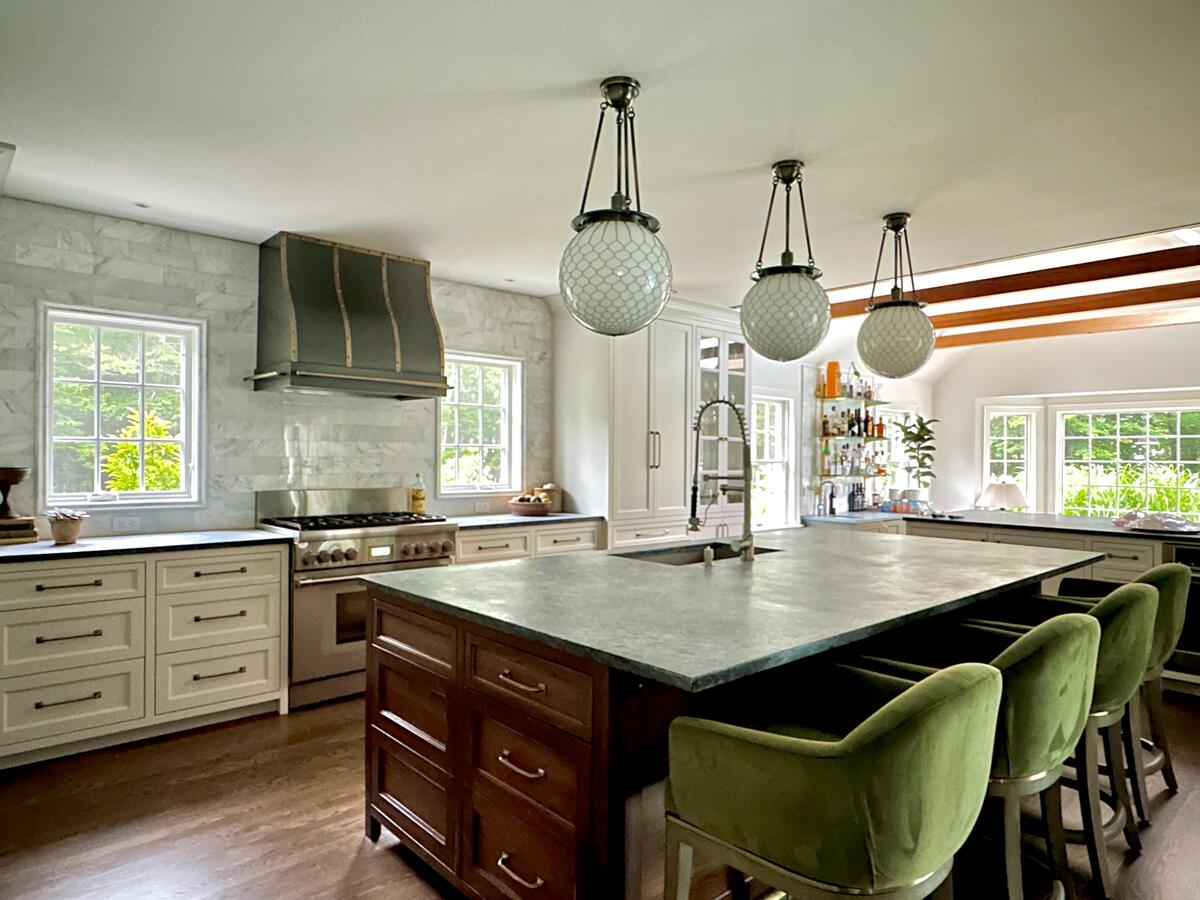
What does your business look like today?
It’s still just me, myself and I. You know, I keep thinking I want to hire somebody, but then I don’t because the thought of trying to train someone to help me run my business the way I run my business [is overwhelming].
What kind of projects are you working on at the moment?
When I first started, I would take anything that I could get. I had young kids, and my clients were all these young parents moving to the suburbs from Manhattan with their families. When I moved here to New Hampshire—first, all of my kids are grown-up, so I don’t have that school connection. And I noticed all my clients are older as well. So far, all of my new clients are, I don’t want to say old, but they’re more mature.
Over the years, I’ve started to fine-tune my business to where I am taking on fewer clients and maybe just better clients. Moving here, I ramped that up a couple more notches, so now I’m working mostly with luxury clients—honestly, at a level that I’ve never done before. It’s pretty awesome to know that I could start basically with nothing on day one in New Hampshire and now I’m working with some of the finest materials I’ve ever worked with, and a level of craftsmanship that is just amazing, you know? And I feel like that just rubs off on the next client. They see that level of work and it’s attracting more of the same.
What was the secret to leveling up in that way?
This might sound crazy, but looking back, it was getting over impostor syndrome. Tackling that is the biggest part of my success.
For me, insecurity about not having the degree and having to bootstrap it was holding me back. When that’s your mindset, you’re just grabbing at whatever comes your way. My clients are the ones who kind of built me up ego-wise, and so did my design community online. Discovering networks of other designers—at first, it was on Twitter, back in 2008—and getting feedback from them made me feel like, “Hey, I actually am doing a good job.” Learning from others was helpful, and then when I found out that people wanted to know how I do things, my impostor syndrome started to shrink.
One day, I got a call from a guy that wanted to hire me while I was sitting in the pickup line at school waiting for my kids. He goes, “So how much do you charge?” And without thinking, I tripled my hourly rate—right there on the spot, over the phone. And it immediately changed the clientele. Suddenly, I started getting serious people who really wanted big stuff.
So often, what holds designers back is that voice in their head saying, “No one would ever pay this for my time.” But I’m guessing that when you tripled your rate for that potential client, he said, “OK.”
Exactly. He was like, “When can you meet?” That was the day I realized I’m really not what I think I am—I’m what they think I am. And that made all the difference for me. That was more than 10 years ago. Since then, I’ve started to focus on: What do I want? What kind of client do I want to have, and what are they looking for? And I just put more of that out there. As I got a client, I would just start bringing in higher-end fabrics and materials, and realizing that no one was saying no. It was just like that phone call—no one was like, “Oh, that’s too expensive.” It was like, “Wait, I can actually use the stuff I’ve always wanted to use?” Before that call, I had a limiting mindset, which is the wrong way to go about it. I was afraid to offer these things to them. Maybe I couldn’t afford it, so I didn’t think my clientele could afford it. Now, I just pretend that I can afford anything in the world.
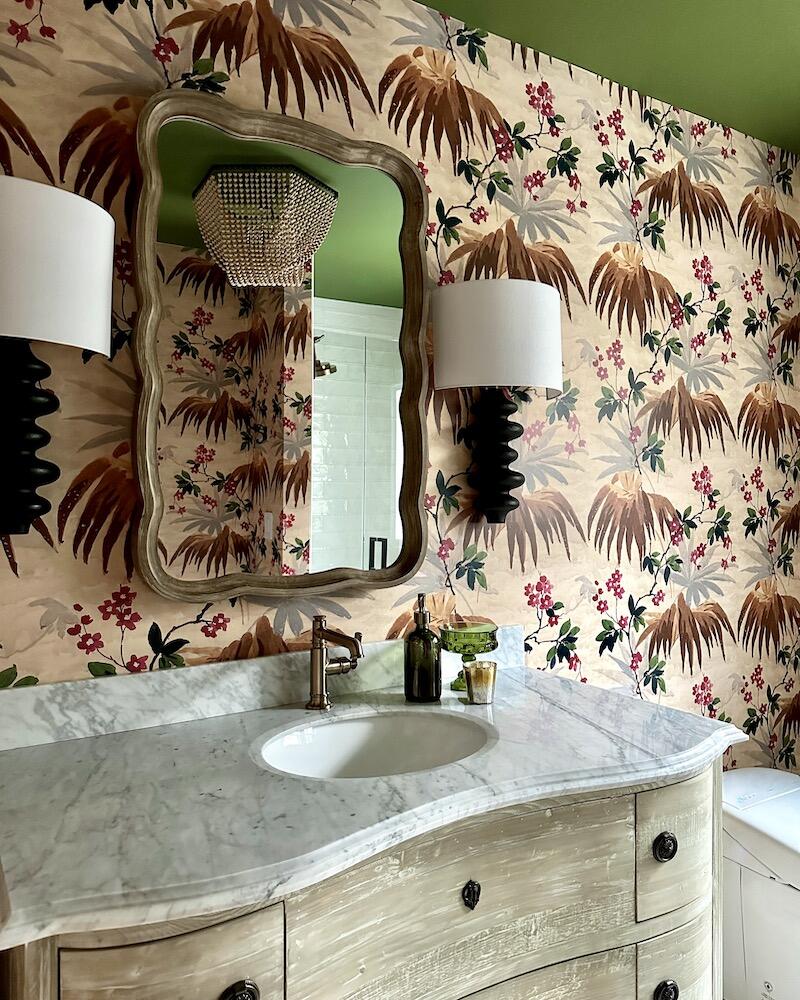
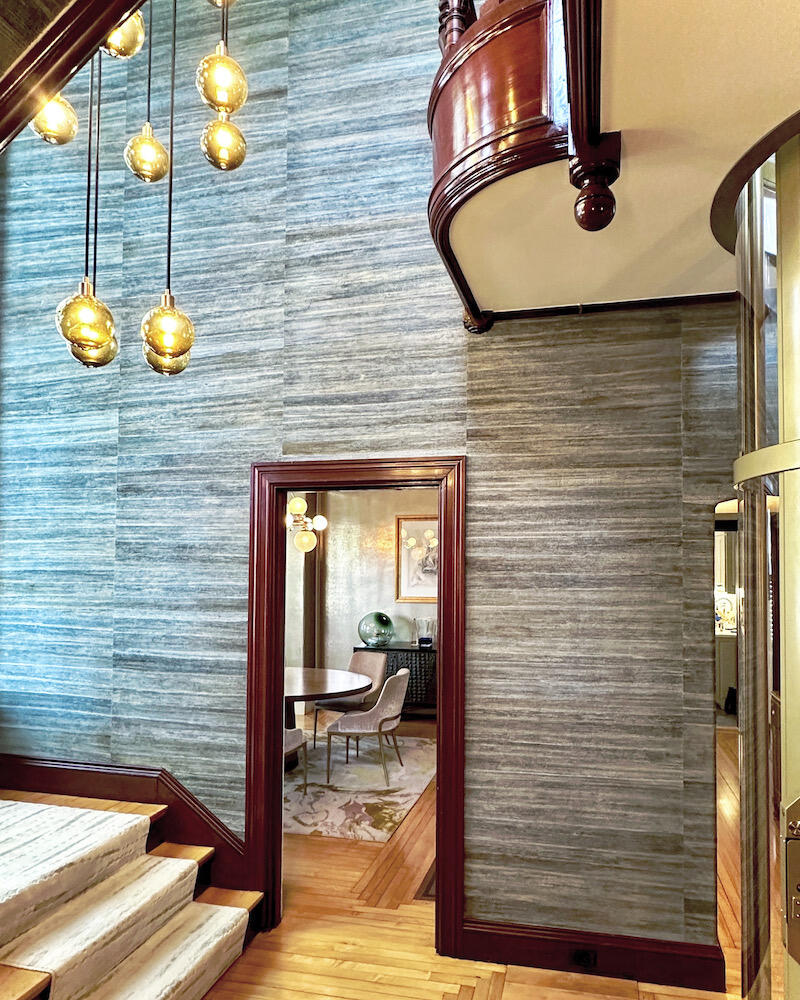
Did the lessons from that call change the way you talk about money more generally with your clients?
My first meeting with a client is always going to be about the budget. In the initial consultation, I find out what they’re like and what they want to do, and then I try to help them figure out how much it’s going to cost and land on a realistic budget. When I’m doing that first walk-through, I evaluate where they’re starting from—where they shop, what they have, what they are wearing. If I can tell they’ve been shopping at Ethan Allen or Pottery Barn, I use that as the base. For that client, the high might be a custom Century sofa. That sets the tone—because even if you don’t want to work with me, that price range is probably what you’re going to pay. I create a little budget for them on the fly so that they can see what it will cost to get everything they want.
How do you approach billing for your work? We’ve talked about tripling your hourly rate all those years ago—are you still hourly?
I charge a design fee to do all the planning and the presentation, and then purchasing is a flat percentage on top of my cost for the goods. And then for some people, I do hourly consultations. I’m working on a ground-up house right now with a client who likes to do a lot of the stuff herself, but she wants me there hourly to make sure she’s not making mistakes before the tile goes in and things like that. I usually sell those [consultations] in blocks of 10 hours.
The other thing I do is invoice for the full cost of goods. If I show them the chair and the sofa and the rug and the lamp and they say yes, they need to pay in full, always, before I order it. I’m never collecting on delivery. I recently sold these two sofas for more than $46,000—can you imagine if I had only charged 50 percent, and I was just out of pocket for the balance?
Does the money part still stress you out?
Not anymore. I think it did stress me out in the beginning because I didn’t know what I didn’t know. And what I didn’t know was how to get the financial stuff organized. Dealing with sales tax in New Jersey was also stressful—that probably stressed me out the most. But in New Hampshire, there’s no sales tax, so life is a lot simpler.
Wait, what?
There’s no sales tax, and there’s no income tax. I mean, that’s one of the reasons we moved back home, though there are high property taxes to make up for it.
Does that impact the way your clients think about their buying power?
For the clients here in New Hampshire, that’s their normal, so it doesn’t really impact them. But when I was working in New Jersey, it did make a difference because the sales tax on some of those big-ticket items is huge. It can make you feel like you’re throwing money away, and it also impacts what they can afford to spend.
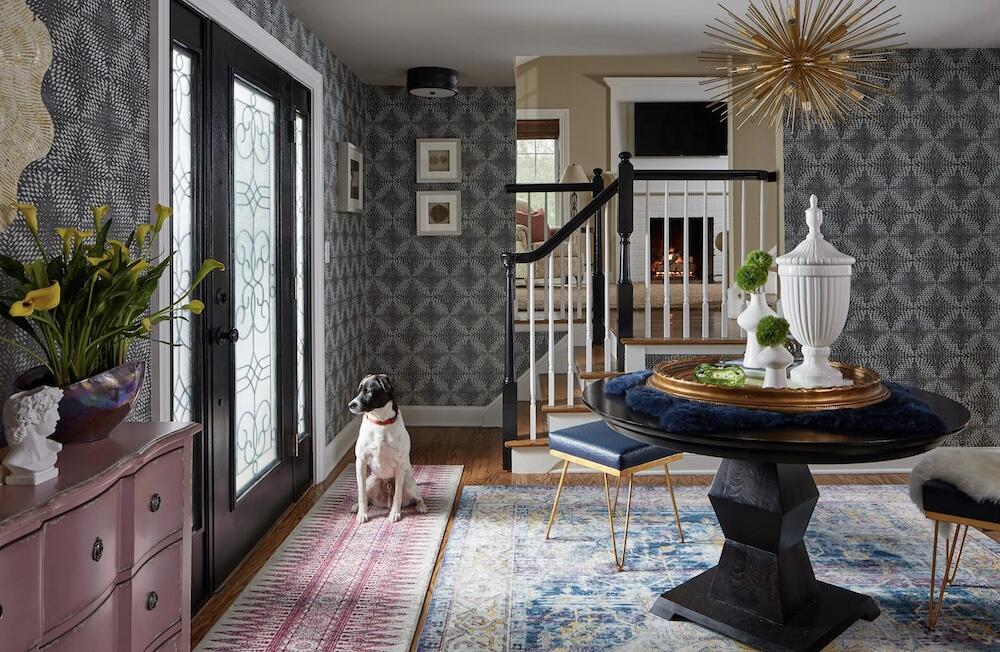
What else can you tell me about working in New Hampshire?
Well, to be honest, I’m still getting my bearings here. But it’s funny because there’s a thing in New England—this whole New England sensibility of, “If it ain’t broke, don’t fix it.” So people keep things. It’s a lot of, “Oh, that’s my great-grandmother’s chair, I need to keep that.” There’s more history up here, and a lot more antiques.
As far as clientele change, since the pandemic, the biggest challenge I have is handling clients’ expectations about timelines. “How long is it going to take?” I can’t tell you. The other thing I have to deal with here is finding all new trades to work with. Who can I trust? How is their craftsmanship? I’m still doing a lot of research to find and build my own go-to team. I have a great wallpaper guy, and a great guy who does built-ins, but it’s hard work—and because everyone was so busy during the pandemic, I couldn’t get any help. Because New Jersey is so populated, I was used to being able to snap my fingers and have anything I wanted done the next day. And here, it’s like, “Well, I’ll get back to you.” And then they don’t. Everything is slower.
On Instagram and on your website, you call yourself “a design ninja.” What does that mean, and where did that come from?
It all started with one client in New Jersey. To save money for clients, I don’t do a big install day, where you go from nothing to being done. We receive things and install them for clients as they come. So one time, I snuck into that client’s house—I mean, with her permission, but it’s how I got the name—and made most of the changes without her realizing I was coming that day. We laughed about it that day—but then I got a lot of business from her telling people about her “design ninja,” and then they started calling me that. It started as a joke, but then it became a thing. When you’re dealing with school moms, [a recommendation like that] spreads like wildfire, and so my nickname just started spreading. I almost named my business that, but I’m glad I decided against it. Now I just keep it in my bio.
But I do love to surprise my clients. That is what I do. I’ll sneak things in that they don’t expect— like, I’ll find out what their most hated color is, and then I stick it in there and they don’t realize it. After it’s all done, I’m like, “Hey, did you see that? Do you see what color that is?” And they’re like, “Oh, my God, but I love it.”
That sounds risky!
Yeah, but I love that part. Because I’m like, you can’t hate a color. You just haven’t seen it in the right setting. I got one woman to paint a whole room green, and she had said that she absolutely hates the color green. In the presentation, I was like, “Here’s the color. It’s called blah, blah, blah”—but it didn’t say “green” in the name, right? I don’t know how she didn’t realize it. She was just like, “It’s such a beautiful color.” Because I had all this other stuff with it. And at the end of the day, I was like, “Did you notice it’s green?” And she hadn’t.
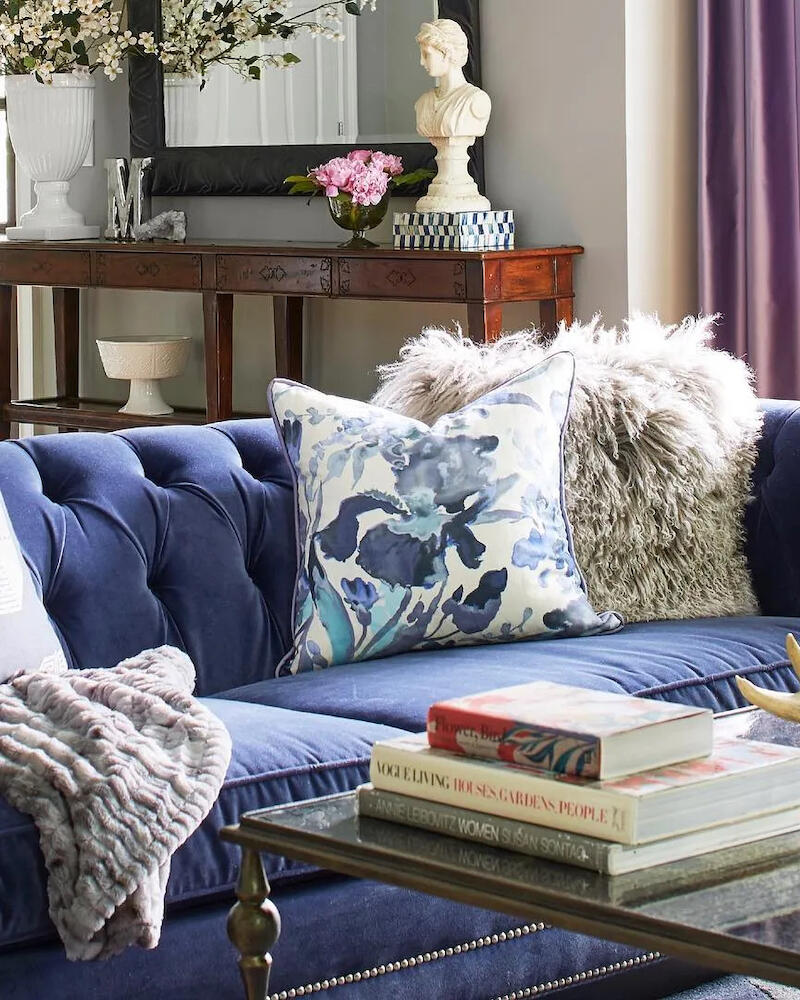
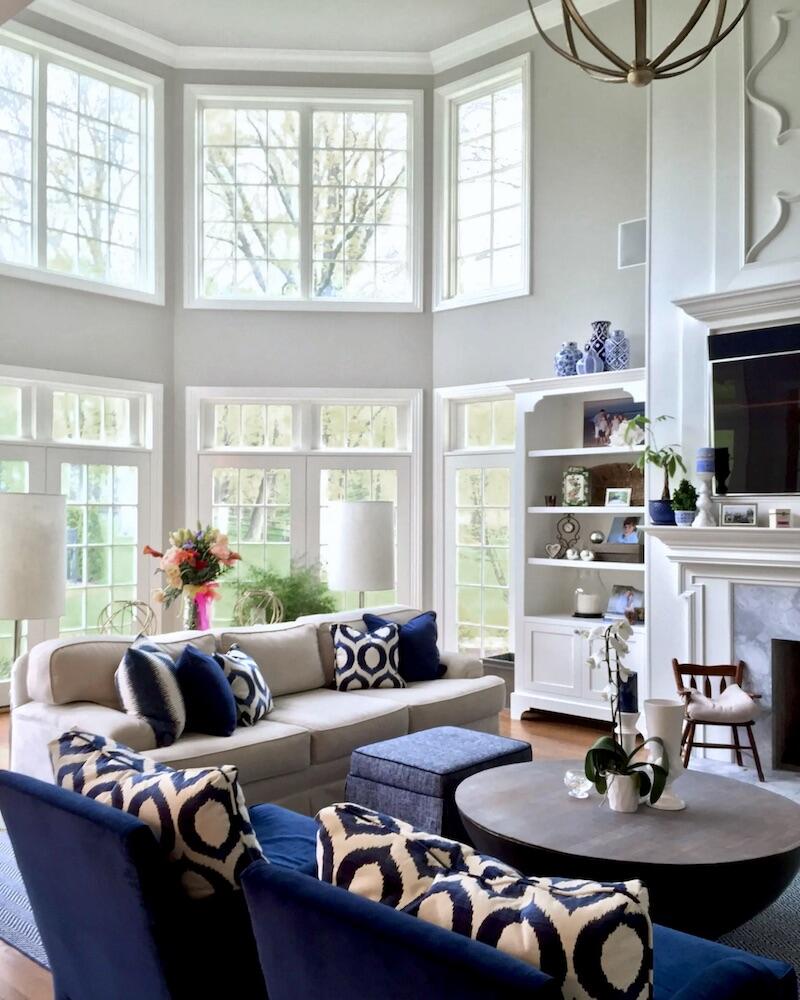
Where do you see the biggest opportunities to grow, or what are you most excited about as you look ahead?
I would love to grow my business to include my own team of carpenters and other types of contractors. I’m thinking about getting my general contracting license and trying to oversee all of those things myself, because it’s just easier for me to manage a job when I can actually manage the people that are involved in the job. That’s something I’ve noticed here—it’s hard to get my bearings and develop relationships with the quality of people I want to work with. And finding not just one, but a backup too.
What does success look like for you?
Success looks like freedom. It’s having everything functioning well, the business is organized, and you’re making enough money so that you have the freedom to say no to the jobs that are going to be during the time you have dedicated to your family, or no to working on weekends.
The other thing would be to have a team. That’s like the most basic answer but it is true. It’d be nice to have a team of designers and support for the back-end stuff. I’m looking at my desk right now thinking, “I wish I had someone else sitting here because some of this is awful.” That’d be nice. But go with freedom—freedom is my real answer.
To learn more about Christine Kohut, visit her website or find her on Instagram.
















